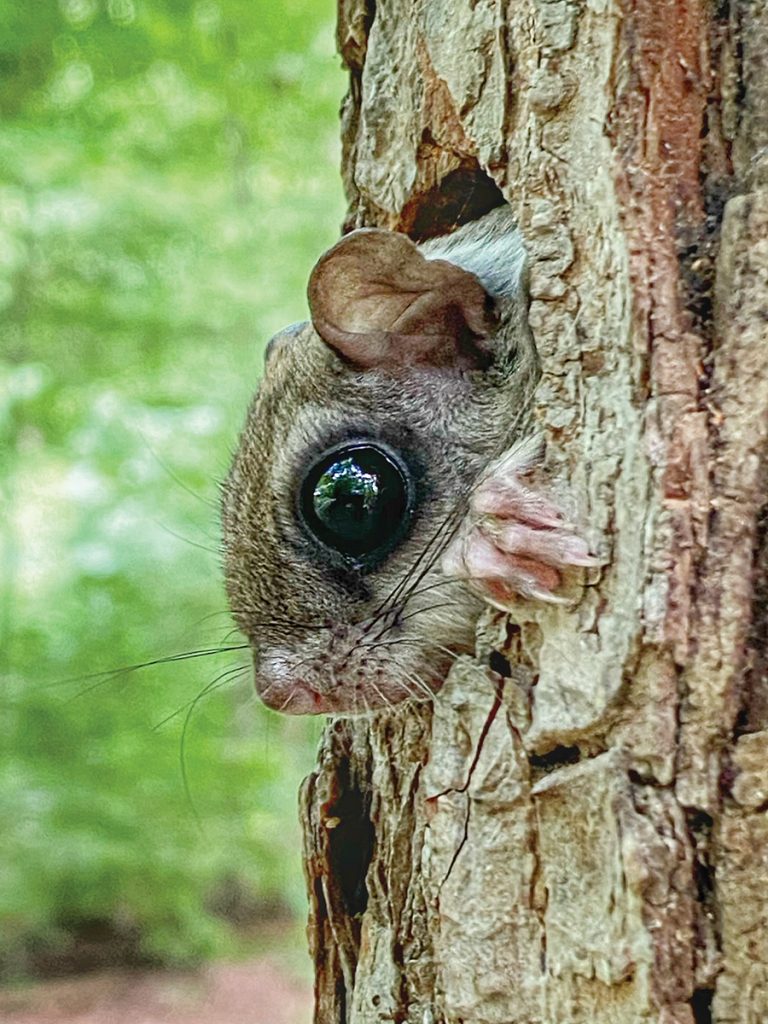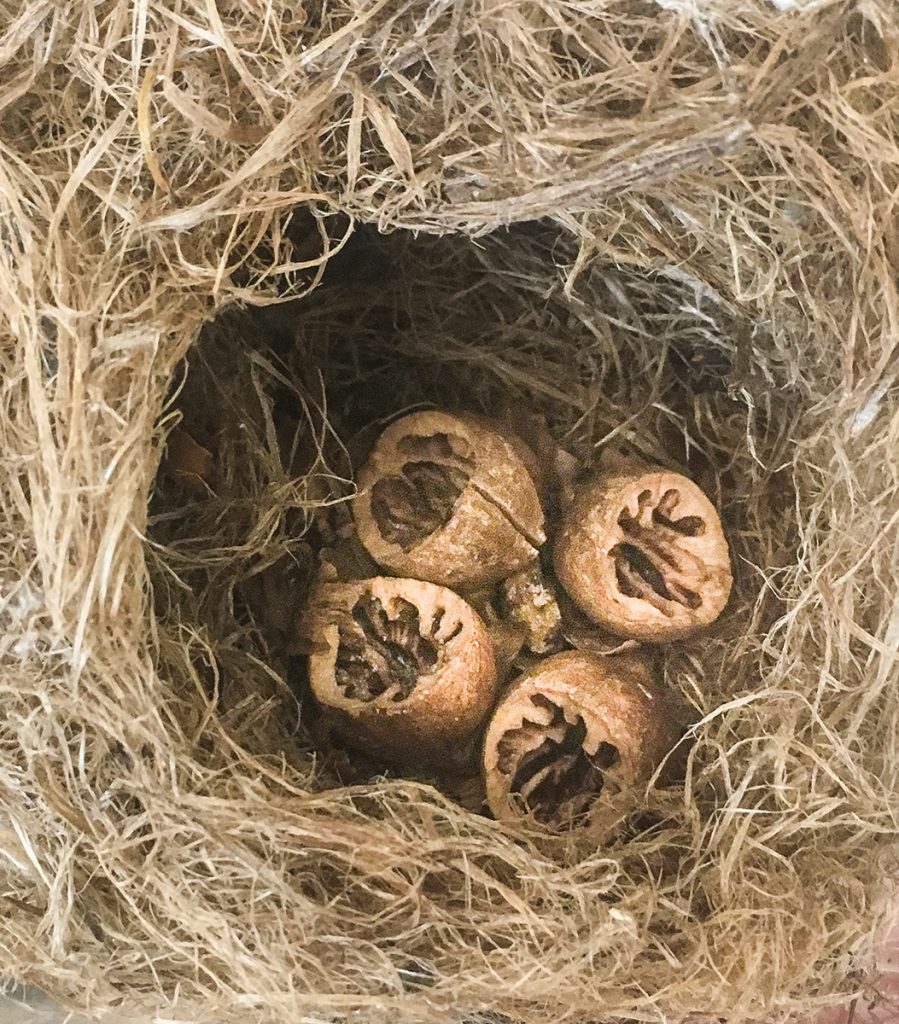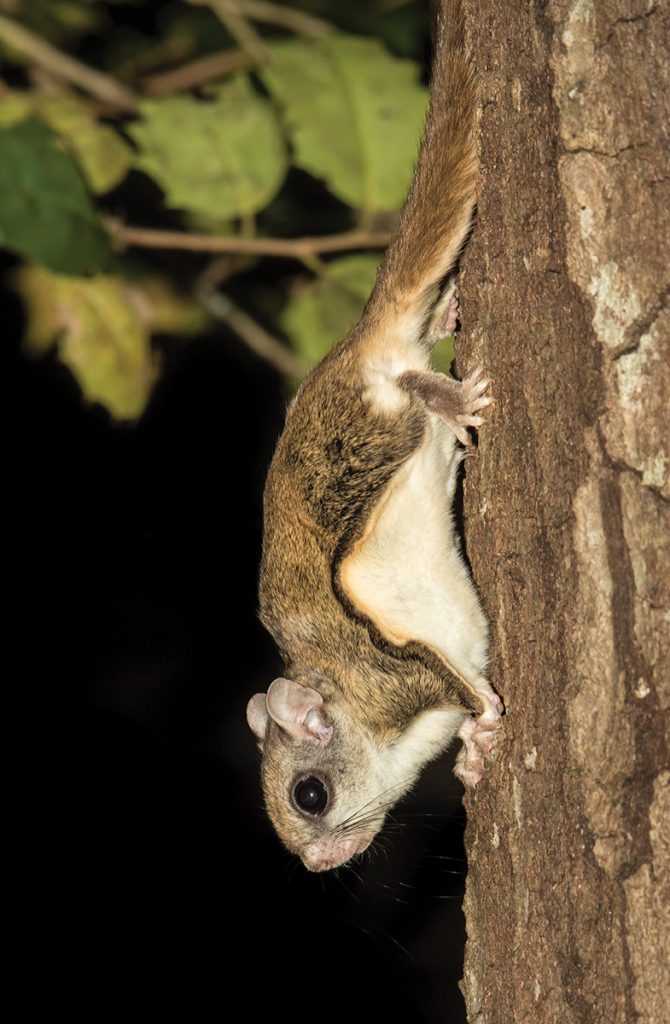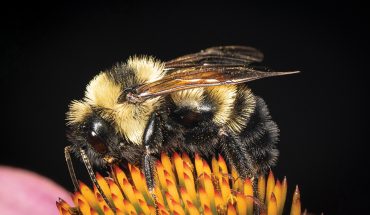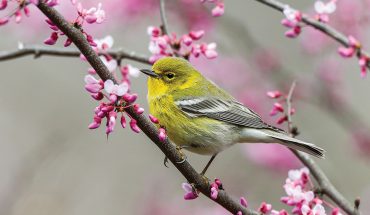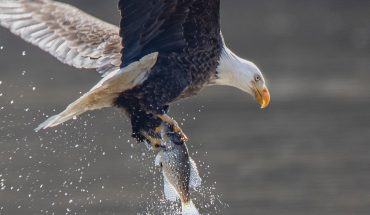Though it’s hard to spot these nocturnal creatures, flying squirrels are surprisingly abundant in our forests and neighborhoods.
Word and photographs by Mike Dunn
My first encounter with our local flying squirrels was on a cold December night years
ago. I was sitting on the screen porch, sipping hot chocolate and enjoying the night sky, when I heard what sounded like birds chirping in the oak trees behind the house. The high-pitched peeps seemed to move from tree to tree.
I finally got a flashlight, shined it up into the treetops and spotted something as it swooped down to another tree and scurried out of sight. It didn’t flap like a bird or bat, but looked like a rocket-propelled kite angling downward through the trees — a flying squirrel!
I’ve probably had closer interactions with flying squirrels than most folks. I had the chance to interact with a captive one in programs when I first started working at the North Carolina Museum of Natural Sciences. The museum had obtained a flying squirrel that could not be released back into the wild from a rehab group.
People loved seeing its big, adorable eyes up close, but it had maintained its nocturnal habits, so it spent most of its days sleeping in a special nest box in a cage.
When I would gently get it out to show to an audience, it would often scurry into my sleeve or down the neck of my shirt to hide; then I had to squirm and reach until I could pull it back out. And those little claws are sharp!
Long before I heard the nocturnal squeaks off our deck, I had been taught by a naturalist friend to gently tap on hollow trees and nest boxes to see if “anyone” was home. If so, the occupant might poke its head out of the opening to see what the commotion was about.
I have seen several species of birds (including various woodpeckers and screech owls) and some mammals (raccoons, squirrels and flying squirrels) with this technique.
Occasionally, flying squirrels will enter homes (usually the attic) and may need to be humanely transferred elsewhere. They generally cause no harm, but their nocturnal habits may create sounds that you don’t want.
One night, a neighbor in my old North Raleigh neighborhood heard something downstairs and went down to investigate, thinking it might be an intruder. As he entered the kitchen, he found the sounds were coming from inside a lower kitchen cabinet.
Not sure what was going on, he bent down, flung open the door and was instantly hit in the chest by a flying squirrel! It quickly began jumping and running all over the first floor of his house. He called me and we finally herded it out the double doors into his back yard. We’re still not sure how it got in there.
There are two species of flying squirrels in North Carolina. The Southern Flying Squirrel is quite common and can be found statewide in pine and hardwood mixed forests.
The other is the rare and federally endangered Carolina Northern Flying Squirrel, a subspecies of the Northern Flying Squirrel that is only found in the high-elevation forests of North Carolina, Tennessee and southwest Virginia.
Though not many people see them, Southern Flying Squirrels can be as abundant as the common Eastern Gray Squirrels we all know from our neighborhoods and local parks. They are the night shift in our woods. My trail cameras regularly catch them on the trunks of trees and occasionally on the ground, where they forage like their daytime cousins.
Unless you hear them at night or see them at your bird feeders after dark, the best way to know you have them as neighbors is to look for the distinctive remains of their meals.
Flying squirrels typically chew a neat round hole in hickory nuts or acorns to get at the tasty meat. If you look closely, you’ll see tiny teeth marks along the open edges and you may find a so-called carry notch, a little divot gnawed onto one end of the nut shell to make it easier to carry to a feeding spot.
By contrast, gray squirrels tend to shred the nut shell or crack it into several pieces. Chipmunks and mice can also chew holes in nuts, but a chipmunk leaves a more ragged edge and mice tend to make several small holes.
Of course, the defining characteristic of flying squirrels is in their somewhat misleading name. They don’t really fly, but they can glide distances of well over a hundred feet by means of their patagium, a special fold of skin between the front and hind legs on each side.
This ability inspired the design of modern wingsuits used by human base jumpers and parachutists. When a flying squirrel climbs up a tree trunk and jumps off, it stretches out its legs and the patagia act as “wings” for it to glide; its tail also flattens.
This gives the squirrel a great amount of surface area in relation to their size and weight (they weigh only about 2 to 3 ounces and are 8 to 9 inches in length, including their 4-inch tail).
Flying squirrels tend to have regular routes through their home turf, climbing multiple trees and gliding downward several times to get to prime feeding areas. They are able to turn in mid-glide at almost right angles by manipulating the patagium and tail.
As they approach their landing, they pull upward, landing on the tree with all four feet. They then usually scramble around to the back side of the tree, possibly to avoid potential predators that may have spotted and followed them. Their main predators are various species of owls, foxes and domestic cats. If able to avoid predators and disease, flying squirrels can live five or more years in the wild.
One interesting tidbit about these wild neighbors was discovered in 2017. John Martin, a forestry professor in Wisconsin, was doing a nighttime survey of plants and lichens with a ultraviolet (UV) flashlight, since some species of plants fluoresce in UV light. He saw a streak of pink in his light beam and identified it as a flying squirrel.
This prompted an extensive survey with fellow researchers of museum specimens and living flying squirrels. They found that flying squirrels do, indeed, exhibit a pink fluorescence in UV light.
Ultraviolet fluorescence has been documented in plants, marine and terrestrial invertebrates, arachnids and birds. But it is rare in mammals. This group of scientists compared flying squirrels to other types of squirrels (including Eastern Gray Squirrels, Fox Squirrels and Red Squirrels) and found that only the nocturnal flying squirrels had the fluorescence. Interestingly, the only other local mammal that shows this trait is the Virginia Opossum.
Why these critters exhibit this unusual attribute is unknown. Theories range from a form of communication between individuals in the forest to fooling predators. UV light is more important as sunlight is diminished at dusk and dawn and at night, so the ability to see and be seen in UV is more important to nocturnal animals.
The fluorescence is brightest on the white fur on the belly and patagia. If an owl spots the bright UV streak of a flying squirrel as it glides to a tree, it may follow hoping for a meal.
When the squirrel lands, the pink becomes harder to see, and then the potential prey darts to the other side of the tree to maybe live another day. (It turns out that several species of owls also have fluorescence on their belly feathers in UV, so who knows what may be going on in the evolutionary struggles of our forests.)
This past summer we participated in a museum-sponsored moth event at the house, where we put out a sheet with a UV light on the deck to attract and share our local insects. At one point, there were three flying squirrels on the nearby sunflower seed feeder, generally ignoring us.
The feeder is on a pulley system, so we decided to pull the cuties closer to try to see the biofluorescence. Two of the flying squirrels didn’t like that plan and scrambled across the wire to the nearby tree. But one stayed and kept feeding until it was just a few feet from the deck. Shining a UV flashlight on it revealed the hot pink glow along the edges of its belly fur. Just another fun Friday night at home!
This article originally appeared in the December 2023 issue of WALTER magazine.

